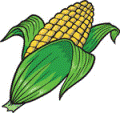Agricultural Research Division of IANR

Haskell Agricultural Laboratory (Northeast Research and Extension Center)
ORCID IDs
Date of this Version
12-11-2015
Citation
Soil Sci. Soc. Am. J. 79:1693–1703 doi:10.2136/sssaj2015.05.0200.
Abstract
Crop rotation influences yield through its effects on nutrient and pest cycles, soil C, water availability, and soil physical and chemical properties. A cropping system study was conducted from 2004 to 2008 near Brunswick, NE, on sandy loam (Haplustolls) soils to evaluate improvements of irrigated corn (Zea mays L.) yield and N use efficiency (NUE) when following soybean [Glycine max (L.) Merr.] in 2 yr as corn following soybean (CS) or in 3 yr as first-year corn following soybean (C1) and second-year corn following soybean (C2) compared with continuous corn (CC). SPAD readings at V10 and R2 were approximately 3 to 4% greater in CS than CC, indicating more inseason N availability. Corn grain yield of CS (12.1 Mg ha−1) was 20% greater than CC (10.1 Mg ha−1), with 69 and 57% greater NUE and N recovery efficiency, respectively. At zero N applied, corn harvest index was 15% greater in CS with 37% increased plant N uptake at harvest compared with CC. In CS, fertilizer replacement value estimated soybean N credits of 66 and 49 kg N ha−1 based on grain yield and plant N uptake, respectively. The difference in N rates needed to produce maximum grain yield of CS vs. CC was estimated at 32 kg ha−1 soybean N credit. The average soybean N credit was 49, 41, and 26 kg N ha−1 for the corn in CS, C1, and C2, respectively. Both the 2- and 3-yr corn–soybean rotations on loamy sand soils improved corn yield and NUE.


Comments
Copyright © 2015 Soil Science Society of America. Used by permission.